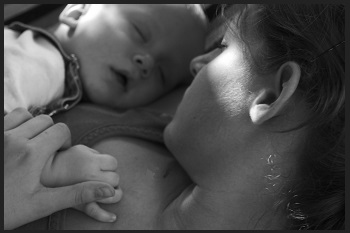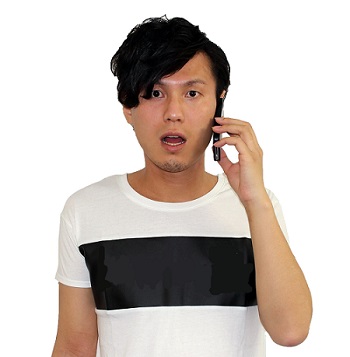Newborns that have been moved into the intensive care unit can still be watched by their mothers.
A hospital in the United States is going to begin using Google Glass to make it possible for new moms to remain in contact with their newborns when the babies have been transferred to an intensive care unit (ICU).
This has been designed as a wearable technology experiment that is occurring within the Boston hospital.
The pilot is being conducted in Boston’s Brigham & Women’s Hospital, according to a report from one of the top Google Glass enthusiast websites, which is called Glass Almanac. The idea for this experiment using the wearable technology was first raised by Stephanie Shine, a nurse at the hospital whose own baby had to stay in the ICU for a total of 101 days. It is common for babies to be sent to ICU for certain amounts of time when either the mother or the baby (or both) is in need of immediate care. However, throughout that time, the mother and baby are primarily separated.
The Google Glass experiment allows participating mothers to view streaming images of their babies.
 To do this, participants that visit the ICU can use the wearable technology and the images that they see will be streamed live to tablets that are given to the mothers. Therefore, the mothers will be able to view the video of their babies when the participating nurses visit their babies.
To do this, participants that visit the ICU can use the wearable technology and the images that they see will be streamed live to tablets that are given to the mothers. Therefore, the mothers will be able to view the video of their babies when the participating nurses visit their babies.
Certainly, watching video over a tablet computer is not the same as actually seeing and holding the baby in person, but it is far superior to the separation that is currently occurring. This also gives the mother the opportunity to be able to hear the nurses as they discuss the baby, while it also provides her with the chance to ask questions. It gives the mother the virtual experience of being in the room.
The purpose of the experiment is to discover whether or not using Google Glass can help to ease the stress that is felt by a mother when she is required to be separated from her new baby.
These mobile devices are certainly becoming more popular, but many consumers wonder if they come with medical risks.
The last several months has represented an extremely important time for the release of various types of wearables as well as for the very beginning of consumer adoption, but as was the case with the penetration of cell phones and smartphones, consumers are now wondering if these devices will be safe for their health.
Unlike traditional smartphones, wearable technology is worn on the clothing or body all the time.
Tech companies and fashion brands, alike, have been stretching their creativity to the outer extent in the hopes of coming up with a type of wearables that would truly appeal to consumers and that they would want to be able to purchase so that they can wear them all the time. Many predictions have showed that this industry has tremendous potential, as the market will grow to about $50 billion over the next three to five years. That would represent a market increase of about ten times where it was in 2014. The release of the Apple Watch in the first quarter of 2015 expected to drive that growth quite powerfully.
Wearables may present a technology and financial opportunity, but the health consequences have not yet been thoroughly examined.
 Recently, at the New York Times International Luxury Conference session on wearable technology, there was a great deal of repetition when it came to the main topics surrounding these gadgets, but the only one on a considerable panel of participants to discuss the actual safety of the devices was Diane von Furstenburg, the fashion designer. She was the only one to raise that topic throughout the entire event.
Recently, at the New York Times International Luxury Conference session on wearable technology, there was a great deal of repetition when it came to the main topics surrounding these gadgets, but the only one on a considerable panel of participants to discuss the actual safety of the devices was Diane von Furstenburg, the fashion designer. She was the only one to raise that topic throughout the entire event.
As much as is it is important to discuss its opportunity as a product, whether or not it is useful, if it is affordable for the average consumer, and whether or not it is stylish, knowing if it is safe to actually wear these mobile devices on our bodies at all times is an important consideration. After all, many smartwatches and health trackers are worn at all times, including throughout sleep. Augmented reality headset wearables are worn throughout the day right on the head. This is a great deal more exposure than a smartphone, which is often put down, when it is not in use.
As wearables become increasingly popular throughout this year and become mainstream in the near future, it is more than likely that health and safety risks will become a rising topic of discussion and an important trend to watch.
 To do this, participants that visit the ICU can use the wearable technology and the images that they see will be streamed live to tablets that are given to the mothers. Therefore, the mothers will be able to view the video of their babies when the participating nurses visit their babies.
To do this, participants that visit the ICU can use the wearable technology and the images that they see will be streamed live to tablets that are given to the mothers. Therefore, the mothers will be able to view the video of their babies when the participating nurses visit their babies.
 Recently, at the New York Times International Luxury Conference session on wearable technology, there was a great deal of repetition when it came to the main topics surrounding these gadgets, but the only one on a considerable panel of participants to discuss the actual safety of the devices was Diane von Furstenburg, the fashion designer. She was the only one to raise that topic throughout the entire event.
Recently, at the New York Times International Luxury Conference session on wearable technology, there was a great deal of repetition when it came to the main topics surrounding these gadgets, but the only one on a considerable panel of participants to discuss the actual safety of the devices was Diane von Furstenburg, the fashion designer. She was the only one to raise that topic throughout the entire event.